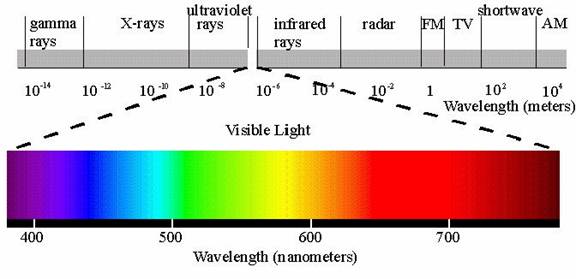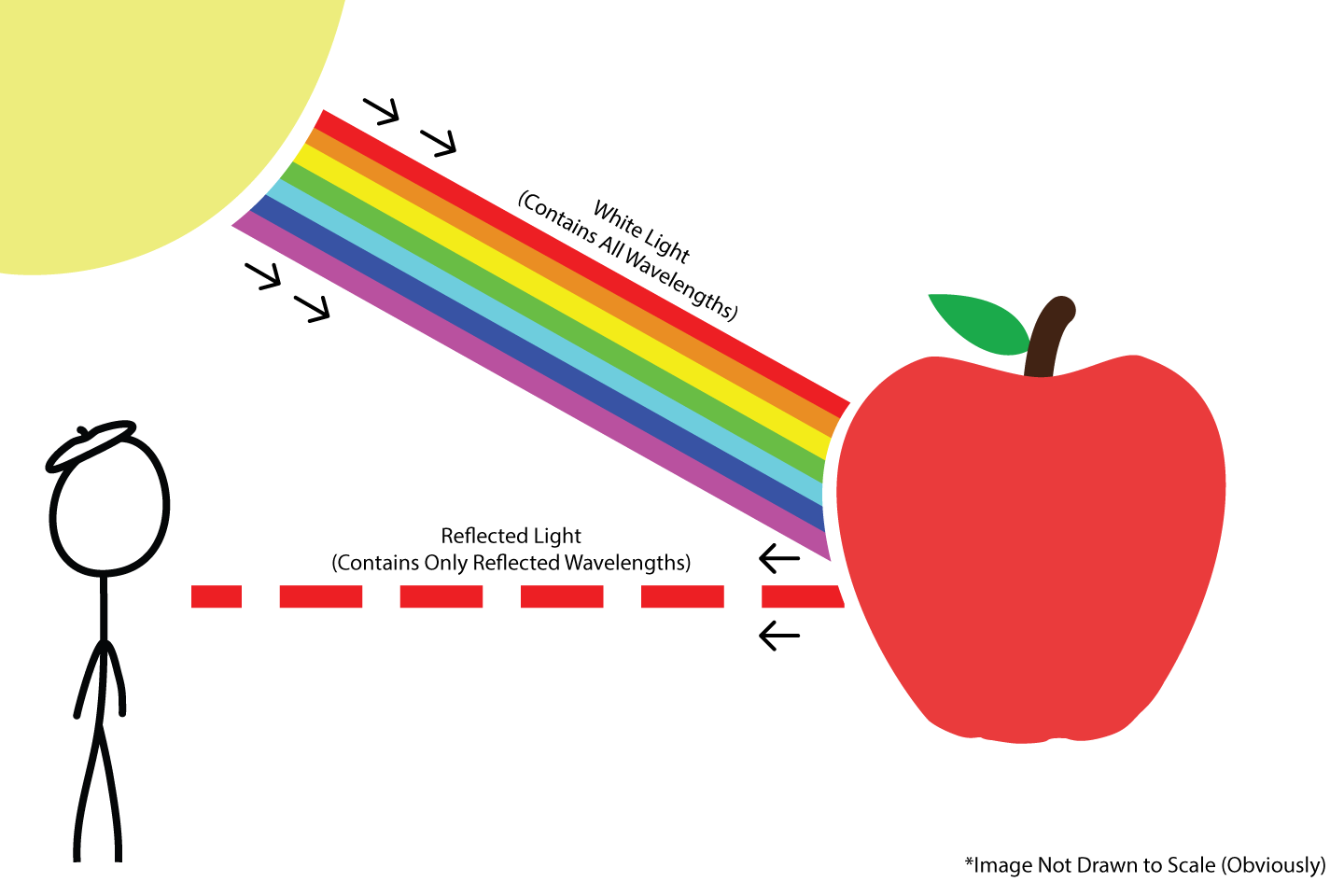Question #e311c
1 Answer
Orange.
Explanation:
As you know, the visible portion of the electromagnetic spectrum corresponds to a wavelength interval that starts at about

Now, the color perceived by the human eye is determined by which wavelengths of light are absorbed, reflected, or transmitted by an object.
That is, when an object absorbs all the wavelengths of light associated with the visible spectrum, we perceive that object as being black.
Likewise, if all the wavelengths of light in the visible spectrum are reflected, we perceive an object as being white.
Similarly, if all wavelengths of light in the visible spectrum are transmitted, we perceive the object as being transparent.
When an objects absorbs certain wavelengths of light and reflects others, the color of the object is given by the reflected wavelengths. For example, we perceive an apple as being red because its constituent molecules absorb all wavelengths of light except red.

In your case, an object that absorbs all wavelengths of light except orange, our eyes will perceive the color of that object as being orange.
Every type of color our eyes perceive is a combination of absorbed and reflected wavelengths of light.

